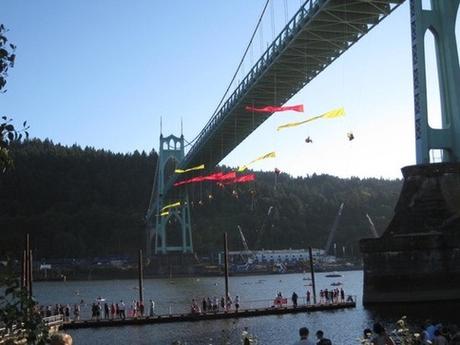
On July 30, the whole world watched as 13 Greenpeace activists dangled from ropes tied to the St. John’s bridge in Portland, Ore., red and yellow streamers catching the wind. They were blocking the exit of the Fennica, Shell’s ice breaker headed to the Arctic to facilitate drilling. These young activists hung there for 40 hours in makeshift platforms and slings during some of the hottest days on record, before the police and Coast Guard brought them down. One hundred feet below them, filling the river with their colorful small boats, were Portland’s “kayactivists” from the local Climate Action Coalition — some were experienced paddlers, others kayaking for the very first time. On shore stood over 500 people, cheering and chanting “Stop that boat!” Some were moved to tears by this unprecedented spectacle and by the courage of the protesters. Sourced through Scoop.it from: www.huffingtonpost.com
GR: Civil disobedience must often be disagreeable and even unlawful. The term implies an argument with existing practices and laws. Whistleblowing, marching, and gathering are essential to maintain a healthy democracy.
Human rights and welfare are the common focus of civil disobedience, but some, like the Greenpeace activists in the photo, believe that animal and ecosystem rights are equally important reasons for civil disobedience. This is usually justified by arguing that humans cannot survive without healthy ecosystems occupied by healthy animal and plant populations. There is another, rarer, form of this justification: Nature, consisting of air, rocks, water, soil, animals, and plants has inherent importance unrelated to humans, not because of how humans benefit from nature, but because nature has equal rights to exist.

